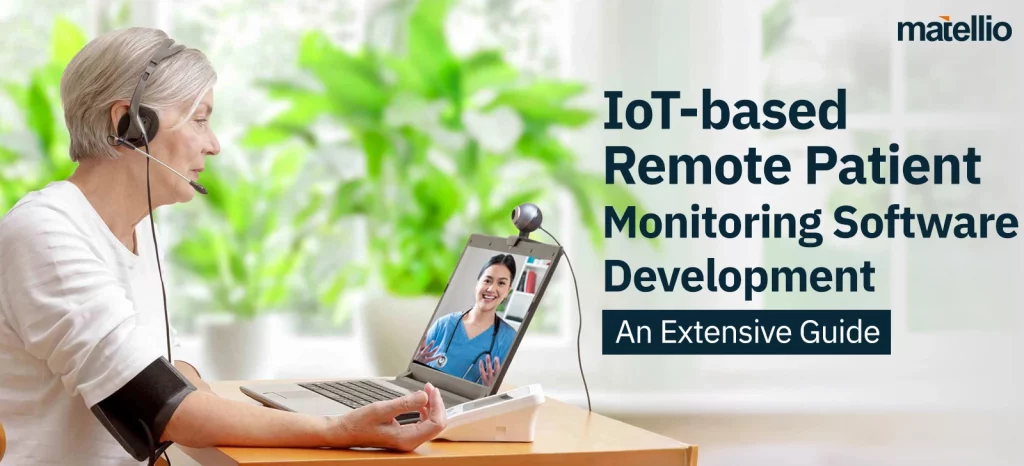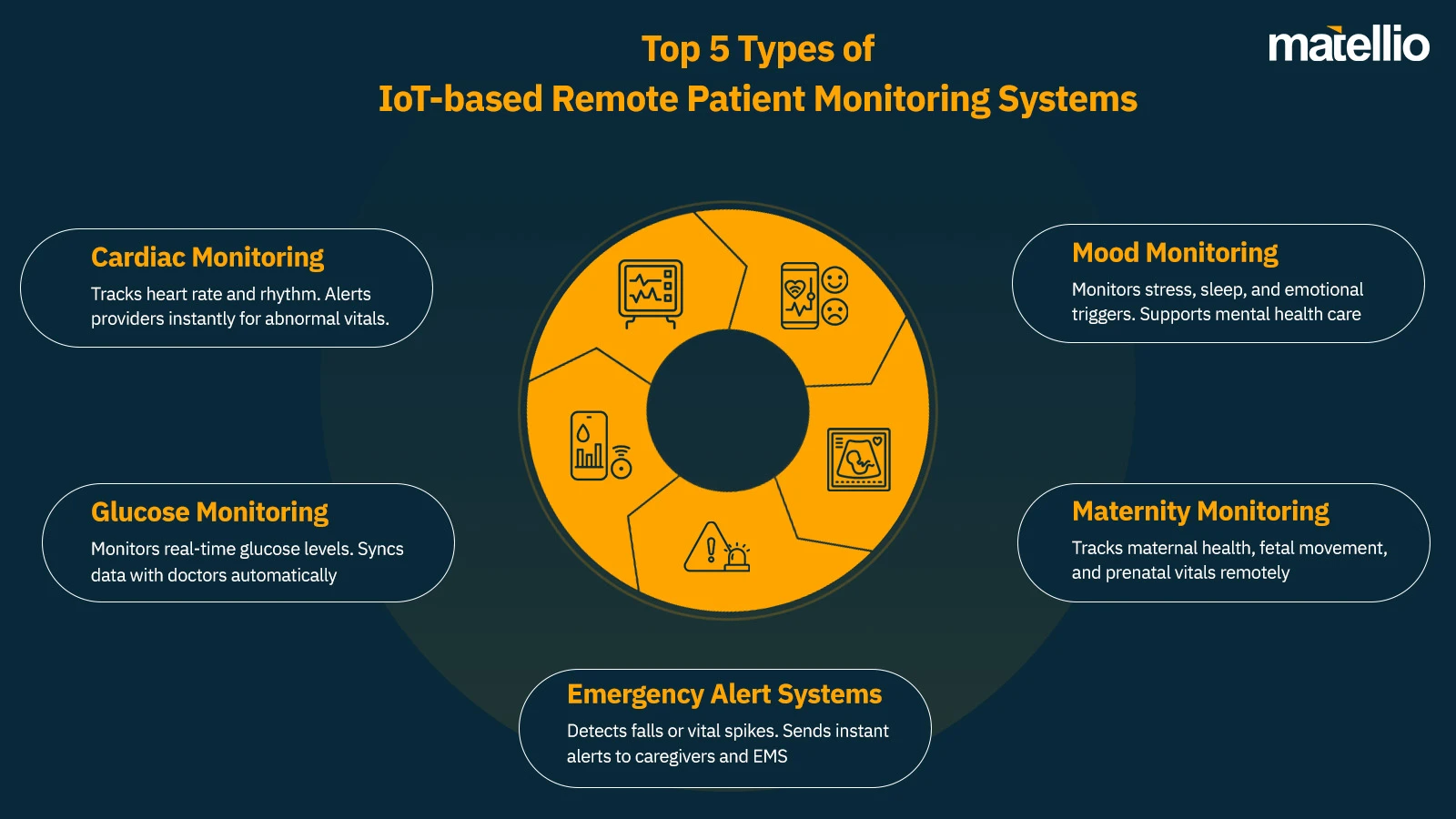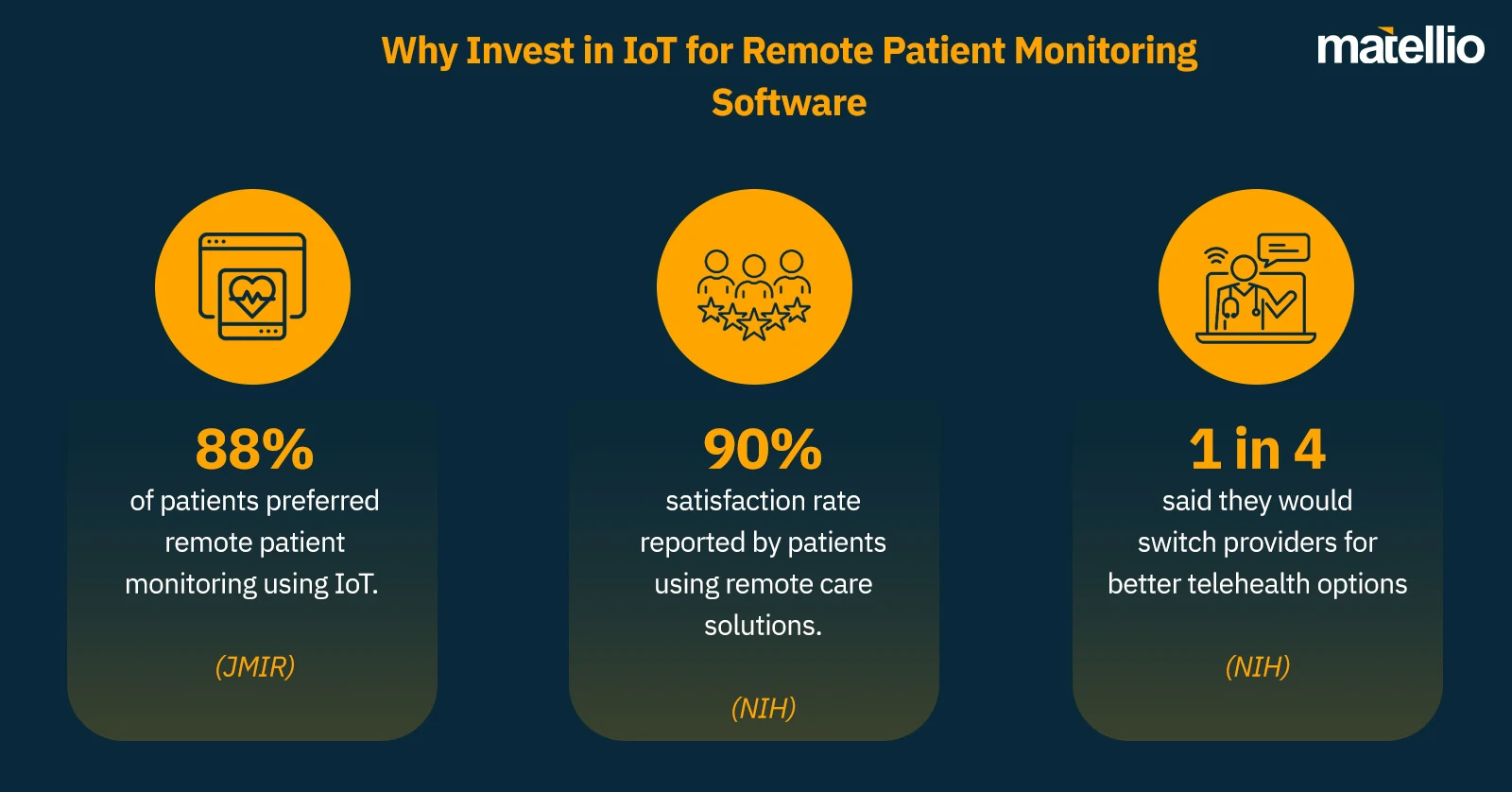
If you’re running a clinic, elder care facility, or hospital, you already know — care is no longer limited to the four walls of your building. The most forward-looking providers are turning to an IoT-based remote patient monitoring system to keep patients connected, safe, and supported — no matter where they are.
This isn’t just about technology. It’s about giving your team real-time data, cutting down unnecessary visits, and improving patient trust. And it’s already working — the remote patient monitoring market has grown from $975 million in 2020 to a projected $3.2 billion by 2027.
More than 20% of major healthcare organizations are already using IoT remote patient monitoring. The rest are building their strategies now — and seeing returns in patient retention, clinical efficiency, and operational cost.
This blog breaks down what that shift looks like. What’s driving it. And how you can launch a custom IoT-based remote patient health monitoring system that fits your model — not just in tech, but in impact.
What Is an IoT-based Remote Patient Monitoring System?
An IoT-based remote patient monitoring system is exactly what modern healthcare businesses are turning to — a smart network of medical IoT devices and software that collects patient vitals in real-time and keeps the care team connected 24/7.
You’ve got sensors, wearables, mobile apps — all working together to track patient data like heart rate, glucose levels, or even mood shifts. That data feeds directly into platforms that doctors and nurses monitor, whether the patient is at home, in assisted care, or miles away on vacation.

This is the kind of remote patient monitoring using IoT that’s changing how care is delivered across the U.S.
Seeking a Trusted IoT Services Partner for Remote Patient Monitoring? Your Search Ends Here! Contact Us Today.
How Does an IoT-based Remote Patient Monitoring System Work?
To build or implement an IoT-based remote patient monitoring system, it helps to know how the pieces come together. These systems follow a clear flow — from collecting patient data to delivering real-time insights for medical teams.
Here’s how it works:
IoT Sensors
IoT in healthcare starts with the sensors. These are placed on the patient’s body to collect vital data — heart rate, oxygen levels, glucose readings, etc. That’s the hardware layer in any IoT-based remote patient health monitoring system.
These sensors are part of what makes remote patient monitoring using IoT so effective — always on, always tracking.
Capital Equipment
Once the sensors collect the data, it goes to a display or processing device — what we call capital equipment. This equipment receives data through wired or wireless connections and gives physicians a direct view of the numbers.
This setup is used in many clinics and hospitals running IoT remote patient monitoring as part of their care model.
Remote Patient Monitoring Software
Here’s where it all comes together. Raw sensor data means nothing without context. The custom remote patient monitoring software reads it, organizes it, and turns it into actionable info — visible through dashboards, alerts, or health reports.
The software is the decision layer in every IoT driven healthcare system for remote monitoring of patients. It helps providers intervene at the right time and with the right context.
Why Healthcare Providers Are Investing in Remote Patient Monitoring Software Development
If you’re running a clinic, hospital, or elder care facility, here’s the real question: how do you keep delivering quality care without adding strain to your staff or infrastructure?
That’s exactly where an IoT-based remote patient monitoring system comes in.
With these systems, care teams get real-time data that just isn’t possible with traditional visits — vitals, patterns, alerts — all without needing patients to show up at your door.
Here’s what the numbers say:

That’s not a trend — that’s what your patients are already expecting. And if you’re not offering it, someone else is.
This is why so many healthcare leaders are moving forward with custom remote patient monitoring software — not just to modernize, but to stay competitive and retain patient trust.
The real benefit? You improve outcomes, reduce in-person load, and build a care system that’s designed to grow with you.
Let’s talk about how a remote patient monitoring software development company like Matellio helps you get there — the way your team works, not the way generic SaaS wants you to.
Ready to See How Remote Patient Monitoring Can Work for Your Facility? Talk to Our Health Tech Experts Today!
How to Develop an IoT-based Remote Patient Monitoring System: Step by Step
Now that we’ve covered why healthcare businesses are moving toward IoT-based remote patient monitoring systems, let’s break down how the development process actually works.
If you want a system that fits your operations — not another SaaS tool you have to work around — here’s the path most healthcare providers follow when building custom remote patient monitoring software:
 Market Research and Discovery
Market Research and Discovery
Before you build anything, you need a plan.
Market research is the first step in remote patient monitoring software development. It helps you understand what your patients need, what your medical teams expect, and what regulations you have to meet.
Here’s what you need to look at:
- The type of patients you’ll be monitoring, and what kind of IoT remote patient monitoring makes the most sense
- Pain points for doctors, nurses, and administrators
- Certification needs and healthcare compliance (HIPAA, GDPR, etc.)
- Your budget and the best way to start — whether that’s full development or a phased MVP rollout
Many healthcare leaders bring in a remote patient monitoring software development company at this stage. A team like Matellio not only handles the technical build but also offers healthcare technology consulting to find gaps you might not spot on your own.
 Product Design and Prototyping
Product Design and Prototyping
Once the roadmap is clear, it’s time to design.
This is where hardware engineers and software developers work together to build early prototypes. Your IoT-based remote patient health monitoring system needs to connect the devices, gateways, and cloud platform without friction.
Our teams at Matellio create designs, mockups, and working models for you to review — so you can validate if the system meets your real-world needs, not just the technical specs.
This is critical for building an IoT-based system for remote patient monitoring that your teams actually want to use.
 Product Development, Testing, and Launch
Product Development, Testing, and Launch
After your feedback on the prototype, we move to full development.
Here’s what happens:
- Software engineers develop the platform, connecting all your sensors and devices (part of a complete IoT driven healthcare system for remote monitoring of patients)
- Testing teams build cases based on your workflows, not just technical requirements
- Security, compliance, and reliability checks are done before launch
- After quality certification, the system is ready for deployment
When you partner with a full-service healthcare software development company like Matellio, you get a system that’s designed to scale — ready to integrate future features like AI analytics, telehealth modules, or mobile extensions.
The end result?
You’re not stuck paying monthly for limited functionality. You own a solution that works today and grows tomorrow — built for the way your healthcare business operates.
Why Matellio for Remote Patient Monitoring Software Development?
Choosing the right partner for building your IoT-based remote patient monitoring system isn’t just about coding. It’s about building a platform that understands your workflows, meets compliance needs, and is ready to scale as your business grows.
Here’s why healthcare providers and clinics trust Matellio:
Custom Solutions, No SaaS Limitations
We don’t sell pre-built templates. We build custom remote patient monitoring software that fits how your facility runs — not the other way around. From IoT remote patient monitoring setups to full backend systems, everything is tailored to your staff, your patients, and your future goals.
Deep Expertise in IoT and Healthcare Systems
We combine years of experience in IoT development services and IoT healthcare app development with real-world knowledge of clinical workflows. That means smoother device integration, smarter data use, and systems that are easier for your team to adopt and manage.
Full Compliance and Security Built In
When you’re building an IoT-based system for remote patient monitoring, compliance isn’t optional — it’s mandatory. We build systems with HIPAA, GDPR, and other healthcare regulations baked into the foundation, not added as afterthoughts.
Future-Ready Platforms
You’re not just solving today’s problems. With Matellio, your IoT-based remote patient health monitoring system is designed to evolve — whether you need AI analytics, telemedicine integration, or scaling across multiple facilities later on. When you invest once, you stay ready for what’s next.
Real Consulting, Not Just Development
We don’t just build software. We guide you through the whole journey — from discovery to deployment. Our healthcare technology consulting experts help you spot hidden gaps, design smarter workflows, and make sure your investment delivers real operational value.
Working with Matellio means getting a system that’s yours — not rented, not locked down by licenses — and built to serve your patients better every day. Ready to start? Let’s build a system that works for your care model — and for your business model.
 Market Research and Discovery
Market Research and Discovery Product Design and Prototyping
Product Design and Prototyping Product Development, Testing, and Launch
Product Development, Testing, and Launch

